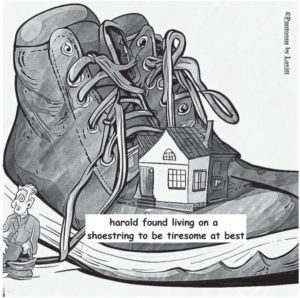The share of male elementary and middle school teachers combined fell from 40% in 1980 to 20% in 2020
As a kindergarten teacher, Chad Hargrove purposely emulates the late Fred Rogers, better known as children’s television host Mister Rogers.
No one in Hargrove’s class needs to be told that men can be kind and soft-spoken. Or that men can be teachers. But only about one in 40 students at Peter G. Schmidt Elementary School will have a male teacher this year. Including Hargrove, the Tumwater school has just two.
Strong evidence suggests that male teachers raise academic performance for boys. “Role models are crucial,” says Richard Reeves, author of a new book Of Boys and Men: Why the modern male is struggling, why it matters and what to do about it.
Reinforcing a stereotype
Nationwide, the gender imbalance among teachers is getting worse. The share of male elementary and middle school teachers combined fell from 40% in 1980 to 20% in 2020, according to Reeves. In 2018, only 11% of elementary teachers were men. The absence of men in the classroom, especially in elementary schools, reinforces the stereotype that teaching young children is “women’s work.”
Locally it’s the same
Thurston County schools mirror national trends. The state Office of the Superintendent for Public Instruction reports that in North Thurston, the county’s largest school district, fewer than a quarter of the teachers are men. Furthermore, only 1.2% of all teachers in the district identify as Black/African American and only 4% as Hispanic/Latino.
Men are more likely to teach at the secondary rather than elementary level. At Olympia High School, 42% of the teachers are men; only two are African American. It matters because academic achievement gaps by race and gender persist.
The cavalry isn’t coming anytime soon
“When it comes to recruitment, school districts are faced with the overarching problem of a national teacher shortage,” says Dan Casler, an assistant principal at Olympia High School. According to Reeves, in a 2021 survey, two-thirds of school districts across the country reported teacher shortages, especially in rural areas.
Enrollment in teacher training programs is in steep decline, with the deepest dip among men. The pandemic has made things worse. Just out of a meeting about impending budget cuts, Casler is grim. “We’re going to lose teachers.” When that happens, labor contracts and seniority, not gender or race, will determine which teachers stay.
A wonderful teacher is a wonderful teacher
Low pay for teachers is an obvious deterrent, but social stereotypes also work against recruiting male teachers. Some people see male teachers in lower grades as predators. “Administrative support is key to dispelling that fear,” says Hargrove. When a grandmother complained that her granddaughter’s kindergarten teacher was a man, his principal responded,
“Yes he is, and he’s wonderful.”
Says Hargrove, “I deserve to be treated with the same respect as any other teacher.”
Modeling is part of the solution
Male teachers fill a need for kids who do not have a father at home—because of trauma, divorce or same-sex marriage. Casler says, “It might help if children’s needs could be a factor in hiring decisions. That male figure is important to a lot of kids.”
“Helping boys see themselves as future teachers starts with modeling,” says Hargrove, who knows that boys like to “play teacher” as much as girls do. When he pairs fourth-graders with his kindergarteners to practice reading, the older boys are patient and compassionate.
“First you let kids see a man in the role of teacher,” says Hargrove, “and then you let them model it right in front of you.”
The rewards of working with young kids
As a high-school student, Casler volunteered at an Olympia elementary school. “I always kind of knew I was going to go in that direction,” he says. After teaching math and working for several years as a school administrator, Casler took a job teaching fifth grade at Peter G. Schmidt, where he stayed for four years. “I really had an amazing experience,” he says. “I still tell people, it was my most favorite job.”
In Of Boys and Men, Reeves advocates for an aggressive national recruitment campaign with the goal of increasing to 30% the ratio of men teaching at the K-12 level.
Meanwhile, Hargrove has accepted a position as the school librarian at Peter G. Schmidt Elementary, where he will work with students in all classes. “Next year,” he says, “everyone will have a male teacher for an hour a week.”
Margaret Thomas is a recently retired college librarian.

Be First to Comment